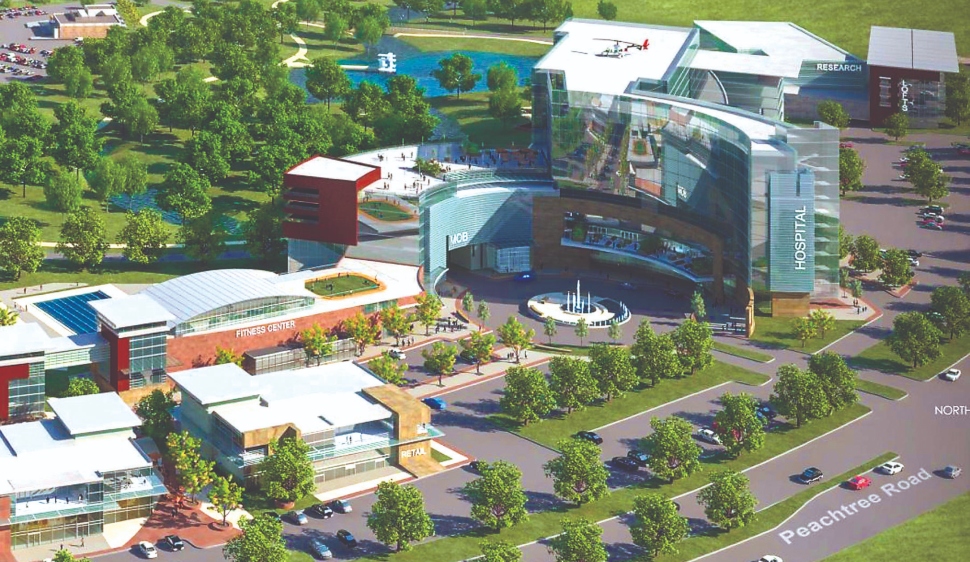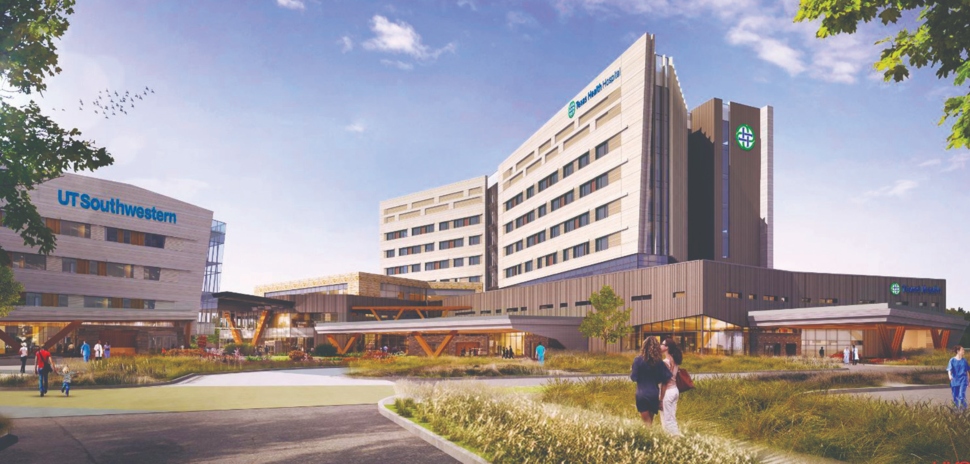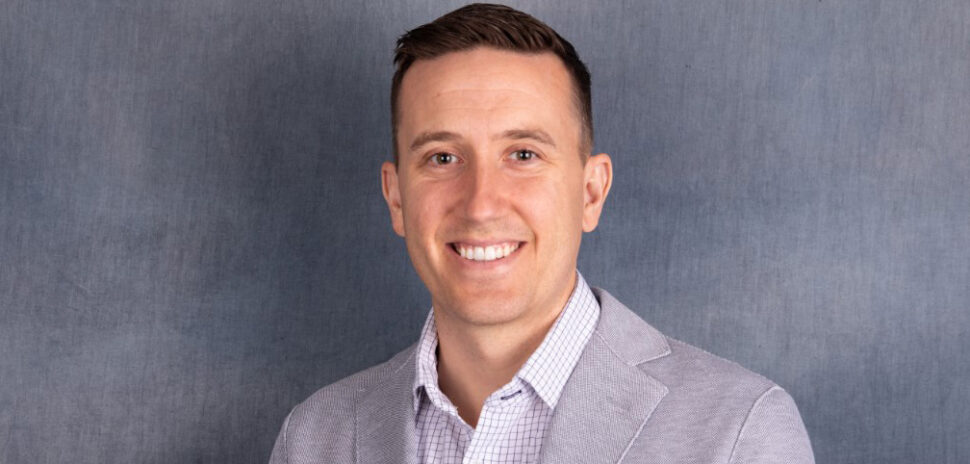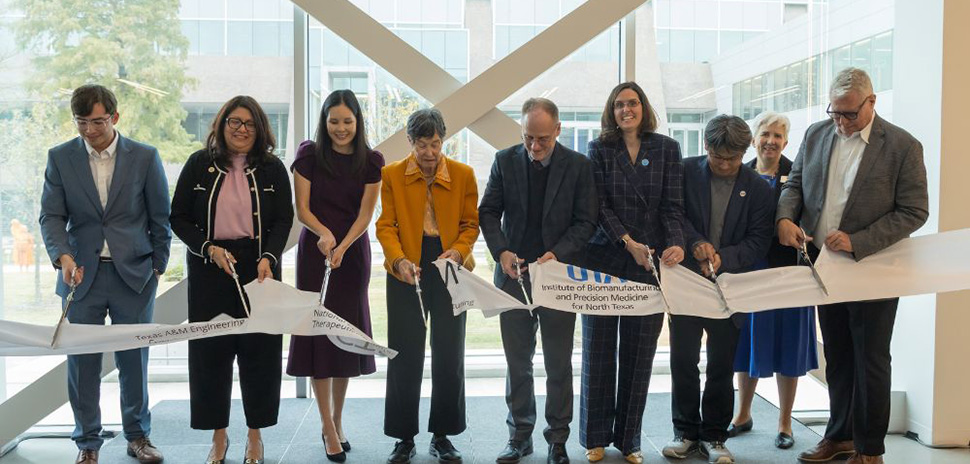Healthcare in North Texas is growing and evolving in urban hospital districts and in suburban cities. This, in turn, is creating a real estate sector rife with new construction, existing facilities expansion, and creation of environments incorporating hospitality and new technologies.
The sector embraces remote medicine and satellite facilities to bring healthcare closer to where patients live, something industry insiders call “retailization.”
The North Texas healthcare sector is a key one, boasting highly ranked hospitals, world-renowned research centers, and biotech and pharma firms, as well as medical device and supply companies. The sector accounts for 15 percent of jobs in the Dallas-Fort Worth area, employs 601,000, and in 2014 had a $52 billion economic impact, according to data from the Dallas Regional Chamber.
Healthcare trends helping push the industry forward
“Retailization” isn’t the only trend affecting healthcare, in Dallas-Fort Worth.
Proposed and completed mergers, such as the national merger of Dignity Health and Catholic Health Initiatives to create CommonSpirit Health, have put healthcare M&A activity at a fever pitch in 2018.
“Unlike many other building types in the US, hospitals are designed to operate for 50 years plus.”
Tina Larsen, Corgan
Healthcare in North Texas also is growing because of the region’s population boom and the nationwide aging trend, as the baby boomer generation heads into their golden years.
And, healthcare is evolving as medical technology advances bring new treatments, equipment, and tech requirements into healthcare facilities.
For healthcare real estate, these trends have to be balanced against another core tenet of the sector – stability, experts say.
“Unlike many other building types in the US, hospitals are designed to operate for 50 years plus,” says Tina Larsen, principal, Healthcare Market Sector leader at Corgan. “One of the biggest design challenges we face in healthcare projects is preparing for technology integration based on today’s technologies, and designing in flexibility and adaptability to allow the integration of technology advances over the next 50 years.”
Bringing care to the people
Revitalization of healthcare refers to the development of clinics, urgent care facilities, free standing emergency rooms, and outpatient surgery centers to ensure locations closer to patients, Larsen says.
She adds that, as the population and communities grow, these facilities expand healthcare systems’ footprints.
What does retailization look like? With institutions such as UT Southwestern Medical Center in Dallas, it is reflected in a partnership with Texas Health Resources, clinics in Fort Worth and Frisco, and medical satellite locations in Las Colinas and the Park Cities, says Dr. John Warner, executive vice president for Health System Affairs at UT Southwestern Medical Center.
“More primary care and secondary care facilities, including surgical and imaging centers, are being built in neighborhoods as healthcare institutions strive to get closer to patients, he said.
“The hospitality feel will transform into a wellness feel that is proven to reduce stress, support healing, and satisfaction for all who utilize the facility.”
Jeffrey C. Stouffer, HKS Inc.
While healthcare facilities will continue to move into communities through mixed-use, retail, and home-based care, Jeffrey C. Stouffer, executive vice president and Global Director at HKS Inc., says the standalone ER market in North Texas is saturated. As a result, some locations closing, pulling back, or merging. He says consumers are becoming “more savvy and selective,” and the standalone ER market will probably continue contracting in the next few years.
Leaning on hospitality is another trend connected with area projects.
Warner cites UT Southwestern’s Clements University Hospital, opened in 2014, as an example. When planning the facility, he says there was a concerted effort to meet with hospitality industry leaders to learn what people want and expect from elements such as lobby amenities and valet parking. He says that input was instrumental in improving the patient and family experience, adding that the hospital has since received awards for patient care and satisfaction.
The hospitality focus begins at the design stage.

Rendering: Verde Center at Peachtree Campus
“HKS and other firms have been integrating a hospitality environment for years within our facility design. Going forward there will be a focus on outcomes-based design, evidence-based design and increasing value for our clients and the buildings users,” Stouffer says. “The hospitality feel will transform into a wellness feel that is proven to reduce stress, support healing, and satisfaction for all who utilize the facility.”
A construction trend gaining popularity in the healthcare sector is prefabrication and increased modularity.
Larsen says there also is an emphasis on adaptive reuse, such as taking advantage of vacancies in urban environments. With prefabrication, Larsen says redundant spaces can, for example, be built in a warehouse with better working conditions — and improved safety and quality — before being transported and “plugged-in.”
“This methodology works well for patient toilet rooms, patient head walls and corridor plenum sections,” she says. “On the Parkland project, BARA, our construction partner, built these items in a warehouse near the project site. This proved very effective in maintaining consistent quality throughout 862 identical toilet rooms.”
Meanwhile, Larsen says technology advances are changing the way in which patients can access healthcare.
“Wearable apps will be used more in the future to monitor chronic health issues and alert patients to access proactive care, often times virtual care, rather than waiting until they need emergency care,” she says. “As a result, we will see more patient-less healthcare facilities designed to house the clinical staff involved in the virtual visits, along with the technology necessary to support these encounters. This type of facility is a business environment and can be located where it is most convenient for the workforce, rather than the patient.”
What’s the remedy for the growing healthcare needs of North Texans? For the region’s healthcare systems and providers, involves embracing new facilities and technologies, and the commitment to bring needed care closer to the patient.
Read the digital edition of Dallas Innovates’ sister publication, the Real Estate Review, on Issuu.
The Dallas-Fort Worth Real Estate Review is published quarterly.
Sign up for the digital alert here.
![]()
Get on the list.
Dallas Innovates, every day.
Sign up to keep your eye on what’s new and next in Dallas-Fort Worth, every day.





![Dr. Justin Lonon, vice chancellor of Dallas College, addresses the crowd at the recent Goldman Sachs 10,000 Small Businesses Dallas Graduation. [Photo: 10KSB]](https://s24806.pcdn.co/wp-content/uploads/2021/06/GoldmanSachs-10KSB-4992-970-970x464.jpg)


























